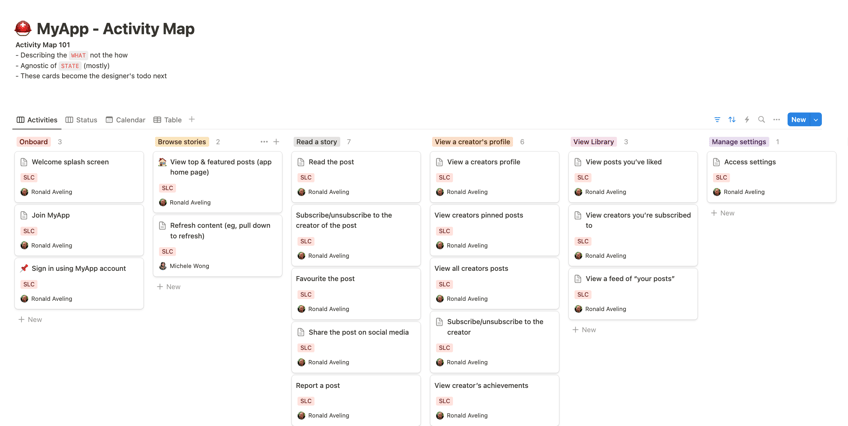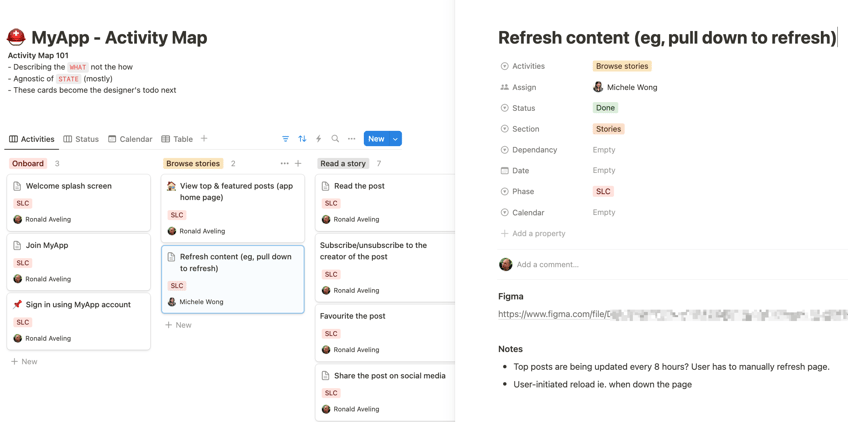Introduction
Activity mapping is a way to dynamically capture (and work on) product requirements in a format that’s more useful than a static document.
Activity Maps are comprised of:
- all
jobsa user should be able to complete via the app or product (e.g. “view account balance” , “view payment history”) activitiesthat group related jobs by a common theme (e.g. “manage account”)
The combination of jobs and activities should be an accurate representation all of the in-scope work the team needs to deliver. In this regard, the process of mapping can help bring increased clarity around scope items that may not have been captured in the Kickoff or related product specification documentation efforts. We like to think of it as an evolution on a typical “product requirements” document – activity maps are more human friendly, and can double as a project management tool.
People & participants
Activity Mapping is often (but not always) driven by the UX/Design Lead, involving close collaboration with other members of delivery team, stakeholders, and SMEs.
Once mapped, activities form the basis of the designer’s TODO list.
Tracking tasks with the Activity Map
The utility of Activity Maps increases when properties such as progress and assignees can be related to jobs. Tools such as Notion, Airtable, Github Projects make it possible to achieve this so that the map is both:
- a representation of all the jobs that are in scope
- the project status of all jobs (
user jobsalso double asdesigner tasks– who’s doing it, and how it’s going)
Instructions
Preparation
Create an Activity Map resource in a Kanban-friendly tool like Notion, AirTable or GitHub Projects. The tool should let you to create a board of page and populate it with custom fields so that can display the jobs by progress as well.
Method
- In working sessions, define the core
activitiesandjobsthat the product supports where:- Jobs are discrete tasks a user performs to fulfil an activity. E.g
track time - Activities group jobs into a related set. E.g.
manage timesheets
- Jobs are discrete tasks a user performs to fulfil an activity. E.g
- As you define jobs and activities, discuss and flag which items should be in scope.
- Repeat until there is consensus that we’ve captured the scope of activities and jobs that need to be supported
- Optional: assign properties for
progress,assignee, andpriorityif you want to also conduct project management ops with this artefact.
Example









